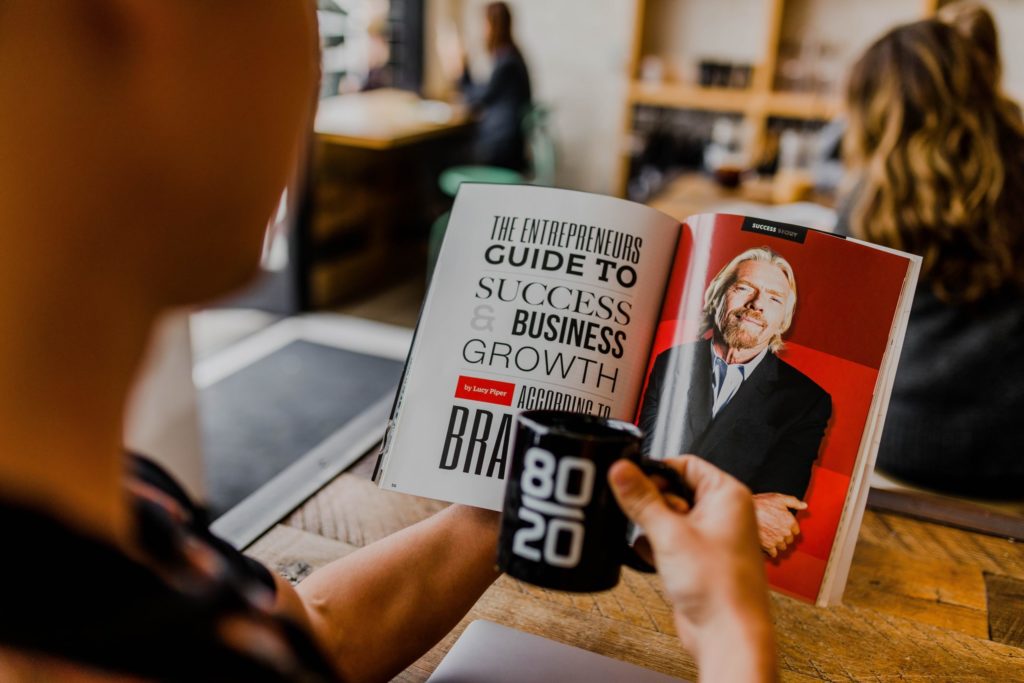Undoubtedly, 2020 was a rough one for many, but 2021 is full of opportunity. To help you get the year off to a flying start, we’re presenting a series of articles designed to help you succeed, transform your life, thrive, and prosper in 2021.
This has been one of the most challenging years you’ve seen in a long time. You’ve seen uncertainty and the unknown in almost every area of life. You’ve felt angry, frustrated, alone, anxious and depressed, and you’re not alone.
During tough times, you need more than just surface-level tips and superficial lists. You need actionable advice and proven principles that empower you to bring out your best, overcome any obstacle, and harness the resilience and resourcefulness that already exists inside you.
Here is a game plan for helping you tap into your inner strength and start the new year strong.
1. Build emotional fitness to conquer anxiety

Emotional fitness is more than just an intellectual understanding of strategies or steps. It’s about building your emotional muscle, energy and health so you can break through any obstacles that come your way.
Here are three keys to building emotional fitness.
3 keys to emotional fitness
1. Nutrition: Value in, value out
What you feed your mind is just as important as what you feed your body. If you put garbage in, you get garbage out. Now, if you’re committed to being your best, not just physically but mentally and emotionally, then you need to be intentional about what you’re consuming and allowing your mind to feed on.
Mental “junk food” is anything that encourages anxiety, worry, fear and escapism, and doesn’t enrich you, empower you or add positive value to your life.
If it’s low-value TV shows, sensationalized news, or mindless social media then trash it. Studies have consistently confirmed that being on social media increases the emotions of depression and loneliness. Staying connected and informed are important, but not at the expense of your mental health.
On the other hand, mental “fuel” is anything that helps you gain knowledge, improve yourself and achieve your goals. It also includes anything that provides value in the form of creativity, inspiration, motivation, expression or flow.
The easiest way to put this into practice is to notice how most of your screen time is used when you reach for your phone.
In order to build emotional well-being, it’s essential to replace low-value behaviors with content, blogs, books, podcasts and shows that inspire you, educate you and empower you. Once you start “eating healthier,” you’ll begin to feel the difference.
SUMMARY
“Emotional nutrition” is key to emotional fitness. Be mindful of what media you’re consuming, and replace low-value behavioral habits with high-value behavioral value.2. Training: Gratitude guards against anxiety

Any emotion that you go to or experience consistently will become a habit in your body and your brain. You might’ve been taught that emotions are like weather; they come and grow as they please, and they’re out of your control. The truth is, emotions are more like a two-way street.
You can influence your emotions through your focus, body language and your inner dialogue. The more you practice and inhabit certain emotions, the stronger those neural pathways become. For example, the more you practice feeling grateful, the more easily and often your brain will go to gratitude and look for things to be grateful for. This is often referred to as “priming”.
One of the most rewarding ways to prime your brain for gratitude, an emotion that’s been proven to guard against anxiety, is to jot down three things you’re grateful for as soon as you wake up each morning. It sounds overly simplistic, but don’t skip this. As you make this a habit, you’ll find your sense of emotional gratitude becomes stronger and stronger because you’re training your brain to focus on and ignite more gratitude.
You can use this same technique for any emotion you want to strengthen and reinforce. For instance, if you want to strengthen your sense of excitement or joy, you can write down three things you feel excited or joyful about.
To take this a step further, you can more deeply instill target emotions by utilizing Amy Cuddy, PhD’s, famous power posing techniques. The science behind her work is simple: When you embody the posture or body language of confidence like the “superman” pose, it actually sparks the emotion of confidence in your biochemistry. The good news is this can work for any emotion. If you want to feel more joyful, don’t wait for the feeling; try on a joyful pose. Do it in your body first, and it’ll strengthen and spark more of that emotion. You might feel ridiculous doing it, but it makes a difference.
SUMMARY
Hack your biochemistry by strengthening emotions like gratitude. Through habitual practice and intentionality, your brain becomes trained toward a sense of thankfulness that helps guard against anxiety and stress.3. Recovery: Mental minimalism
In a world that is constantly taxing our emotions, one of the best ways to recover is through “mental minimalism” i.e. being still, meditating, unitasking and napping.
According to Gayatri Devi, MD, at Northwell Health in New York, these disciplines “are as important for brain health and longevity as activity and exercise.”
Look, I get it, as an overachiever the words “stillness” and “unitasking” might as well be four-letter words, but when it comes to your overall brain health, longevity and recovery, they are powerful and irreplaceable agents in helping you achieve emotional fitness.
SUMMARY
Giving your mind, body and emotions time to decompress and rest goes a long way in improving your mindset and emotional well being. Take time to practice “mental minimalism” by being still, focusing on one task at a time and getting enough sleep.2. Master your mindset to transform your reality

“To change your reality, you must change your mentality” – Daniel Ally
Your mindset is the foundation to everything. Your thought life shapes your entire life because how you think on a daily basis influences how you feel, which affects what actions you take, which determines what results you get.
An easy way to remember this is through the acronym often used in psychology: T.F.A.R. or “thoughts lead to feelings, feelings lead to actions, actions lead to results.”
Ultimately, your mindset makes the difference between thriving and surviving.
While countless people have struggled this year, we’ve also seen a 13-year record-high of new businesses started in 2020. While many industries busted, we saw some industries experience a massive boom. While everything was falling apart, a few people found a way to take control of their mindset and look for the opportunity.
“The mind is a wonderful servant but a terrible master” – Robin S. Sharma
Your mind is like a wild mustang; if you let it run you, it’ll take you wherever it wants to go, usually driven by fear. If you tame it, it’s a powerful friend that can carry you where you want to go faster and easier than you could on your own.
Think about it; two people could be experiencing the same exact event — riding a rollercoaster. One is having the time of their life, and the other is freaking out the entire time.
What makes the difference? It all comes down to what they’re focusing on. Your focus is what directs your thoughts. That’s the difference between the thriver who finds a way to enjoy the ups-and-downs vs. the survivor who shuts their eyes, grits their teeth and waits for the ride to be over.
The thriver might have the foresight to know “this ride has ups and downs so I might as well enjoy it!” whereas the survivor is thinking “I’m going to die, so let me hold on for dear life!”. The circumstance is the same, but the focus and the mindset is what makes the difference.
This is the same thought pattern you can bring to tough times, to not just the ups, but the downs.
If you’re reading this right now, you’re likely the kind of person who wants to relish every moment of this remarkable ride called life. We all have moments of feeling overwhelmed, anxious, depressed or lonely, and when they happen again and again it’s easy to feel defeated. But it’s not about the moment; it’s about your movement. It’s about deciding to take control of your mindset and moving it in the direction you want to go. That’s something you can put into practice right now.
Whenever you find yourself thinking negatively or in a way that limits you, use questions to consciously direct your focus. Here are a few questions you can ask yourself:
- What can I be grateful for right now?
- Where is the good in this?
- Where’s the opportunity?
- How can I use this to become better?
- How can I see this as a gift in disguise?
- How can I make this fun?
- How can I make the most of this?
Just by putting this into practice, you’ll be taking the reins on one of the most powerful tools you have to conquer 2021 and any obstacles that come your way.
SUMMARY
Your mindset makes the difference between thriving and surviving. Your thoughts lead to your feelings, your feelings lead to your actions, your actions lead to your results. Take control of your mindset and break free from negative thought patterns by using questions to direct your focus.3. Boost motivation and productivity with a dopamine detox

With the world more uncertain, overwhelming and overstimulating than ever, it’s practically second nature to reach for your phone, screen or whatever else you use to cope and distract your mind. In fact, adults in the U.S. spend an average of 2-4 hours a day on their phones (i.e. 2,600 daily touches)
The problem with the creature comforts of watching TV, playing games on your phone or scrolling social media is that they leave you distracted and dull rather than recharged and relaxed. And when you become addicted to your smart phone it wreaks havoc. Some of the negative effects include:
- Chemical imbalance in your brain
- Lack of motivation, focus and desire to pursue your goals
- Lowered ability to enjoy other activities
- Reinforcement of low-value behaviors that detract from your overall well-being and mood
This has a lot to do with dopamine, the chemical that’s responsible for motivation, desire and pleasure. The addictive behaviors that are encouraged by our smartphones rely heavily on triggering dopamine. For example, when you get a push notification on your phone it’s similar to getting the same dopamine hit that’s created from other addictive behaviors like alcohol or drug use.
As we become more and more dependent on our phones for entertainment, distraction and coping during times of social isolation, it screws with our reward system and creates an even greater imbalance.
One of the most effective solutions to breaking free from this addictive loop is to do a “dopamine detox”. A dopamine detox is about reducing or eliminating digital stimulation for a specific period of time with the goal of becoming more focused and productive.
To be clear, this isn’t about living like a monk and giving up all your smart devices and technology; it’s about giving your brain and your biochemistry a much needed break so you can truly recharge, relax and release undue stress. It also gives you more room to optimize your time toward what really matters.
Depending on your schedule there are few ways you can break free from your digital devices:
- If it’s the weekend take a half or full day off
- If it’s during your work day, take 10-20 minute breaks in between tasks
- If it’s after work, detox during your entire evening before bed
Instead of binge-watching Schitt’s Creek, watching YouTube videos or scrolling social, go for a walk, catch up on reading, play the guitar that’s collecting dust in the corner of your room, spend quality time with someone you care about, rest mindfully, make progress on your side-hustle, journal, etc. The key is to take a break from digital and overstimulating behaviors while simultaneously replacing them with behaviors that are more valuable to you.
SUMMARY
Being on your digital devices consistently can create a chemical imbalance leading to a lack of motivation and desire to pursue your goals. Take intentional breaks from media and your smartphone to help “reset” your brain and relieve undue stress.4. Optimize your time by clarifying your values

Like many others, this year has likely forced you to re-prioritize your values, and shift your perspective toward what’s truly most important. When it comes to clarifying your values, you don’t have to go on some complex, existential search; your values are whatever matters most to you.
The importance of clarifying your values helps you optimize your time, focus, and decision-making. It also helps to bridge the gaps between what you say are your priorities and what your actions show they are.
One of the most powerful ways to reconcile any gaps in your values and actions is to measure them against how you spend your time. If you’ve decided that one of your highest values is health but you spend most of your time on the couch and don’t take care of your body, there’s a gap.
The beauty of this tool is that it acts like a GPS. When you realize you’re off track you can course-correct and recalibrate so your time is optimized for fulfillment and achievement.
Ask yourself, do you care more about control or growth? Community or independence? Mastery or enjoyment? You’ll get the best results by being honest with yourself. This is where growth, improvement and potential happen.
3 steps to clarity

- Step 1. Look at a list of values and pick out your top 10.
- Step 2. Determine the top 10 activities where you spend most of your time and energy. Based on how you distribute your time, what are you valuing most right now? Is there a disconnect between what you value and your actions?
- Step 3. Match your time to your values. What can you do to bridge any gaps between how you spend your time and what you value you most?
There’s nothing wrong with spending four hours a night playing video games after work, but if you’re trading off against your top value of productivity or achievement, then there’s a mismatch. Similarly, if you value energy and health as top values but you’ve fallen into the habit of binge-watching hours of TV and chomping down on Cheetos, then you’ve got another mismatch that’s worth rethinking.
SUMMARY
Your values are the guideposts directing your decisions, time and focus. Clarify what matters most to you and allocate your time to match your top priorities.Conclusion
These are four simple but effective strategies you can use right now to transform your life. By taking charge of your emotions through building emotional fitness, mastering your mindset by directing your focus, resetting your biochemistry by detoxing from digital devices, and recalibrating what matters most, you can ignite your inner strength and start the new year fresh.
As you apply these principles to your life, remember that you are stronger than you realize. Here at Fresh N Lean, we believe you have everything you need to succeed already inside you. You have the talent, the abilities and resourcefulness to make next year extraordinary. It’s not about what’s happening around you but what you have inside you that makes all the difference. Times may be tough, but you’re tougher. Don’t settle, don’t play small; that’s not you who you are. Live today and every day to the fullest, dig deep, make your mark, and live the life you were made for.



